
Mike Kelley, “City 5” (2007–09) (all photos and gifs by the author for Hyperallergic)
Every hero has an origin story. In Superman’s case, legend
and comic books have it that he was born on a planet called Krypton,
whose capital city was Kandor. After Superman’s parents sent him to
Earth, a villain named Brainiac stole Kandor and shrunk it to miniature
size, just before Krypton was destroyed. Some time after that, Superman
encountered Brainiac on Earth and discovered that he had the shrunken
Kandor in his possession. The hero managed to wrest it from the
villain’s control and, in an attempt to safeguard the city, placed it in
a bell jar inside his Fortress of Solitude. There it sat, an
inaccessible home within a home — a place that Superman both longed for
and possessed, but could never fully return to.
This is the original version of the story, anyway. There are others,
because from the Silver Age of comics (from whence the Kandor story
originates) until now, a parade of authors has shifted and rewritten the
narrative, revised the story and wiped the slate to make way for new
ones. Among the most fascinating things about mainstream comics and
superheroes is the way they constantly regenerate, taking on new forms
and tales until they become almost like collages — their many tellings
and interpretations layered atop one another under a single name.
This was what most interested artist Mike Kelley about
Superman, and more specifically Kandor: the countless versions of it
that exist. “The design of the city was never standardized, and the
artists who illustrated the stories over the years depicted it in myriad
ways,” he wrote.
“I was fascinated by the fact that there were many different versions
of the same city. It was impossible to reconstruct Kandor.” Naturally,
that didn’t stop him from trying, for the last 12 years of his life.
Those attempts took many forms. The earliest was a truly
visionary plan, in 1999, to create a website through which he could
crowdsource information about Kandor from Superman fans online. The
information would be used to construct physical and digital versions of
the city, and everyone who participated in the project would be invited
to attend the opening of the exhibition, a gathering Kelley termed
“Kandor-Con 2000.” Neither the Con nor the website ever materialized
because of financial constraints (the work was being made for a show at
the Kunstmuseum Bonn, which couldn’t afford either), and so Kelley ended
up receiving all his information about Kandor from a German comic book
collector and hiring a digital animator and architects to create
renderings and models.

Mike Kelley, detail of “Kandor 4”
A while later, Kelley returned to the Kandors
project but decided to “focus on the formal aspects of the … bottles.”
This again led him on a quest — this time nearly impossible but not
quite — in which he spent five years enlisting a glass factory in
Czechoslovakia and a glass-coating company in Ohio to hand-make the
unusually large vessels for him. He then created accompanying bases,
videos, and resin sculptures of cities for each one, as well as
lenticular lightboxes of the illustrations from which they were drawn.
Kelley showed 10 of these at Jablonka Galerie in Berlin in 2007 and went
on to make new Kandors and variations upon them in the
following years — including, in the final year of his life, a massive
installation titled “Kandor 10B (Exploded Fortress of Solitude)” (2011)
that features large, craggy rocks and a cave, inside of which sits a
glowing purple city inside a jar, as well as gold jewels encrusted in
the wall. In the comic books, the Fortress of Solitude is Superman’s
private palace/hideaway; in Kelley’s telling, it becomes the site of a
ritualistic sadomasochism, played out in his short film “Extracurricular
Activity Projective Reconstruction #36 (Vice Anglais)” (2011).

Mike Kelley’s “Lenticular 8” seen from three angles (2007)
More than 20 of the various pieces of these late, realized Kandors are currently on view
at Hauser & Wirth’s Chelsea space in New York City. There is a room
of colored, crystalline cities, which sit atop pedestals, radiating
light and mystery; one complete Kandor set, number 4, whose
combined parts feel like a children’s toy set blown up to giant size; a
wall of lenticular prints, in which comics illustrations of Kandor and
its jar fleetingly appear and disappear with each step; and the fortress
and accompanying film, which teeter between seriously creepy and campy.
A swirling, swooshing, ominous soundtrack accompanies it all.
The Kandors are, like so much of Kelley’s work,
expertly crafted — perhaps to a fault. At the press preview last week,
curator Paul Schimmel spoke of the painterliness of these works, how
Kelley used the story of Kandor as a means of giving himself freedom to
experiment with color, materials, and form. This is evident in the rich
reds, blues, greens, and other hues here, the simple yet
mysterious forms they’re attached to, the glowing lights and play of
shadows. The sculptures and lightboxes are in fact so seductive, I found
myself wondering what lay beneath the surface; their beauty seems
to eclipse any further meanings.
Schimmel also spoke, in regards to the fortress, of “a
kind of epic, spiritual, otherworldly pursuit,” an “architecture of the
mind,” a “monumental sculpture of the unconscious.” These are grandiose
phrases for a sculpture that, although impressive in execution, again
feels a bit too polished for its own good (which could also be a result
of the gallery space it’s in). But they do get at what Kelley seemed to
be after with his massive, unwieldy creation — the
three-dimensional articulation of a mind. Its repressed subconscious
takes the form of the puzzling, at times torturous “Extracurricular
Activity” film (itself based on a found high school photograph), while
the emotional center is the fortress’s cave. Inside, Kelley suggests, we
all keep a pristine, timeless version of home; trapped under glass,
it’s both our reality and our fantasy.
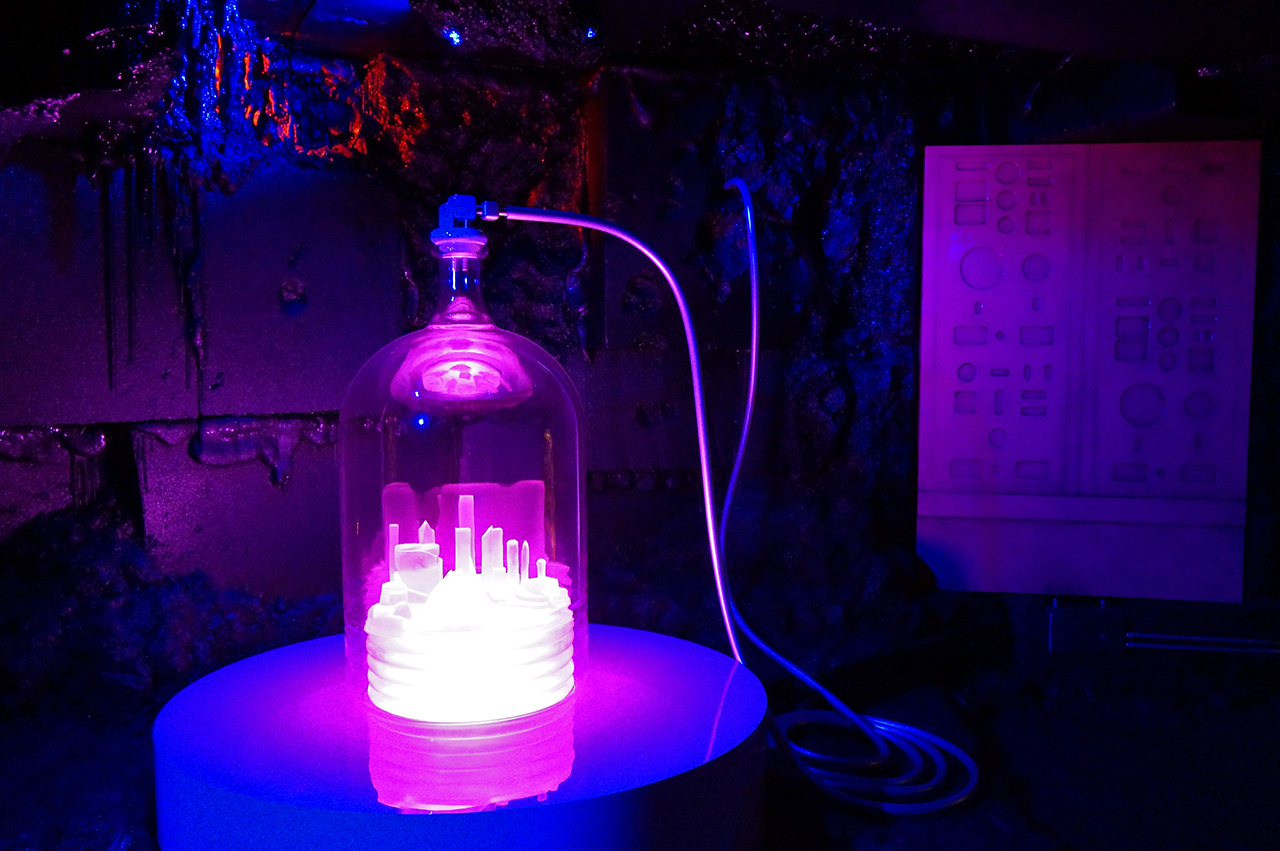
Inside the cave of Kelley’s “Kandor 10 (Exploded Fortress of Solitude)” (2011)
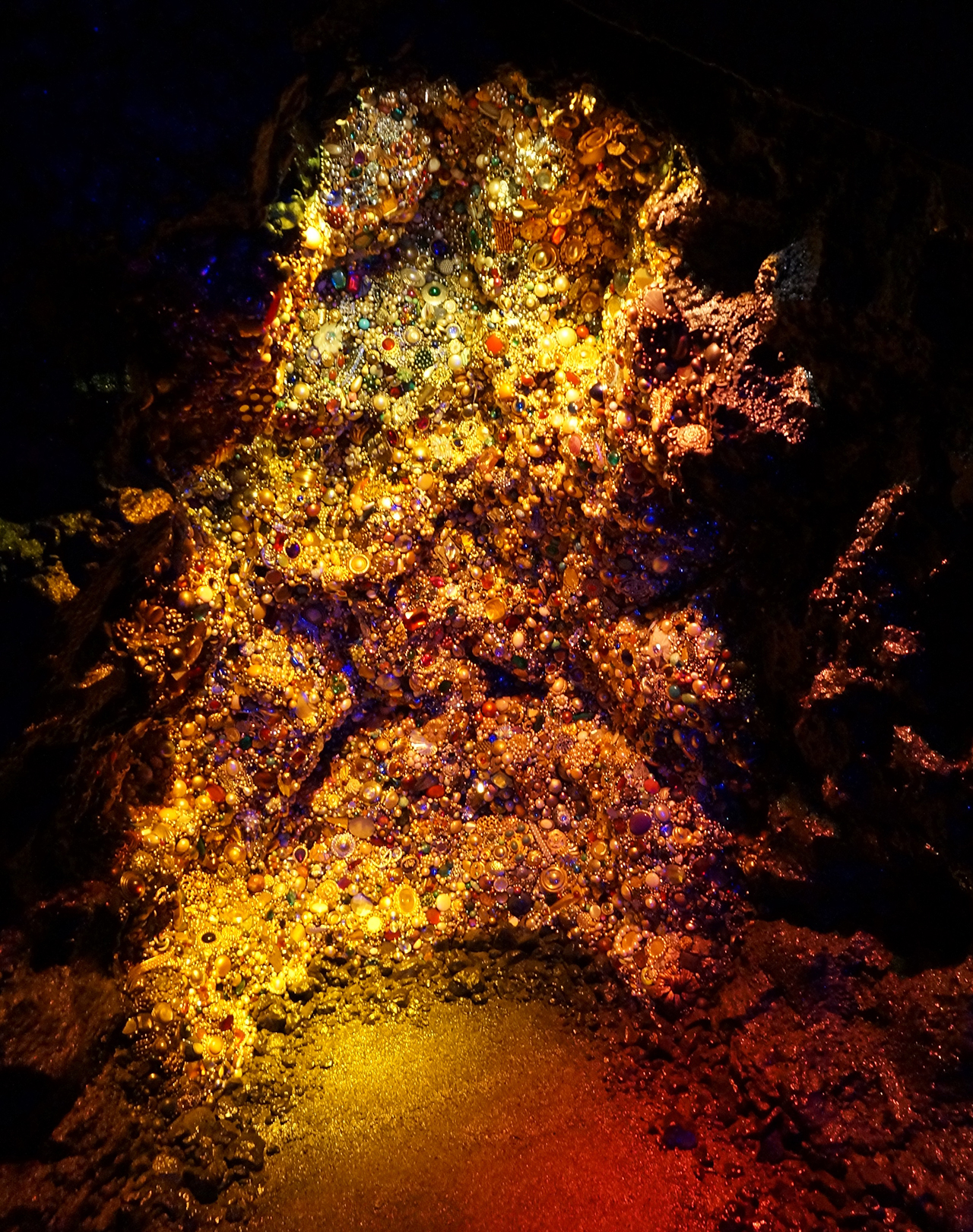
Jewel-covered wall of the cave

Detail of the treasure wall

Mike Kelley, “Kandor 10B (Exploded Fortress of Solitude)” (2011)
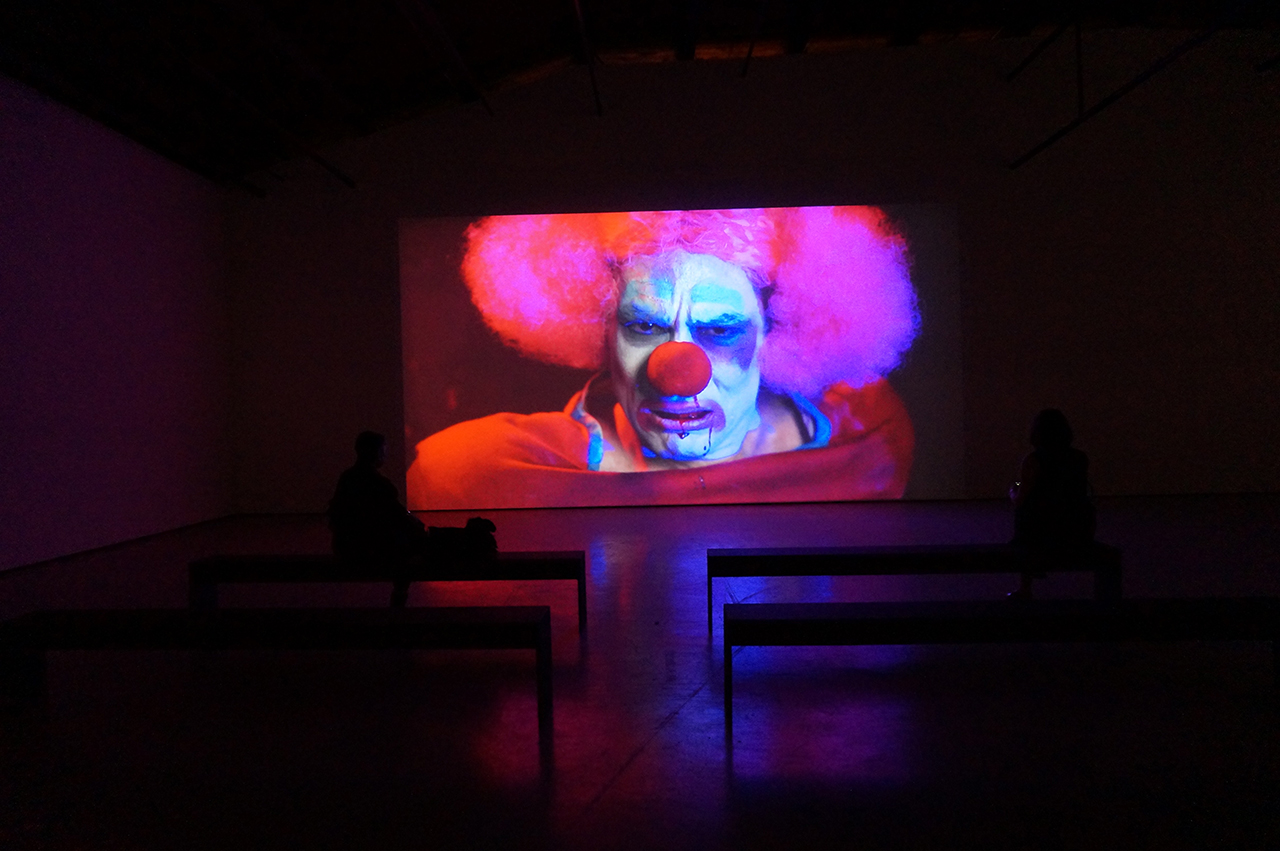
Mike Kelley, still from “Extracurricular Activity Projective Reconstruction #36 (Vice Anglais)” (2011)
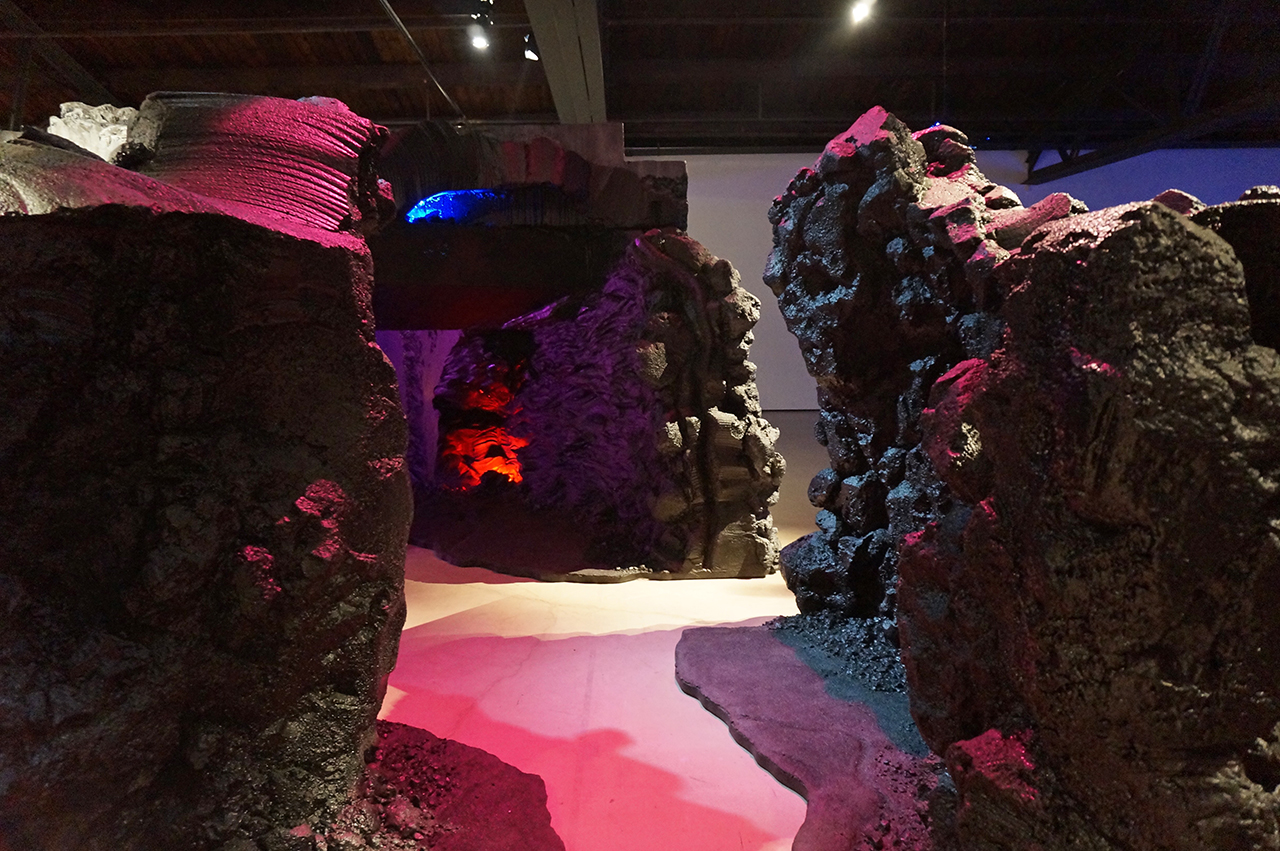
Mike Kelley, detail of “Kandor 10B (Exploded Fortress of Solitude)” (2011)

Installation view, ‘Mike Kelley’ at Hasuer & Wirth
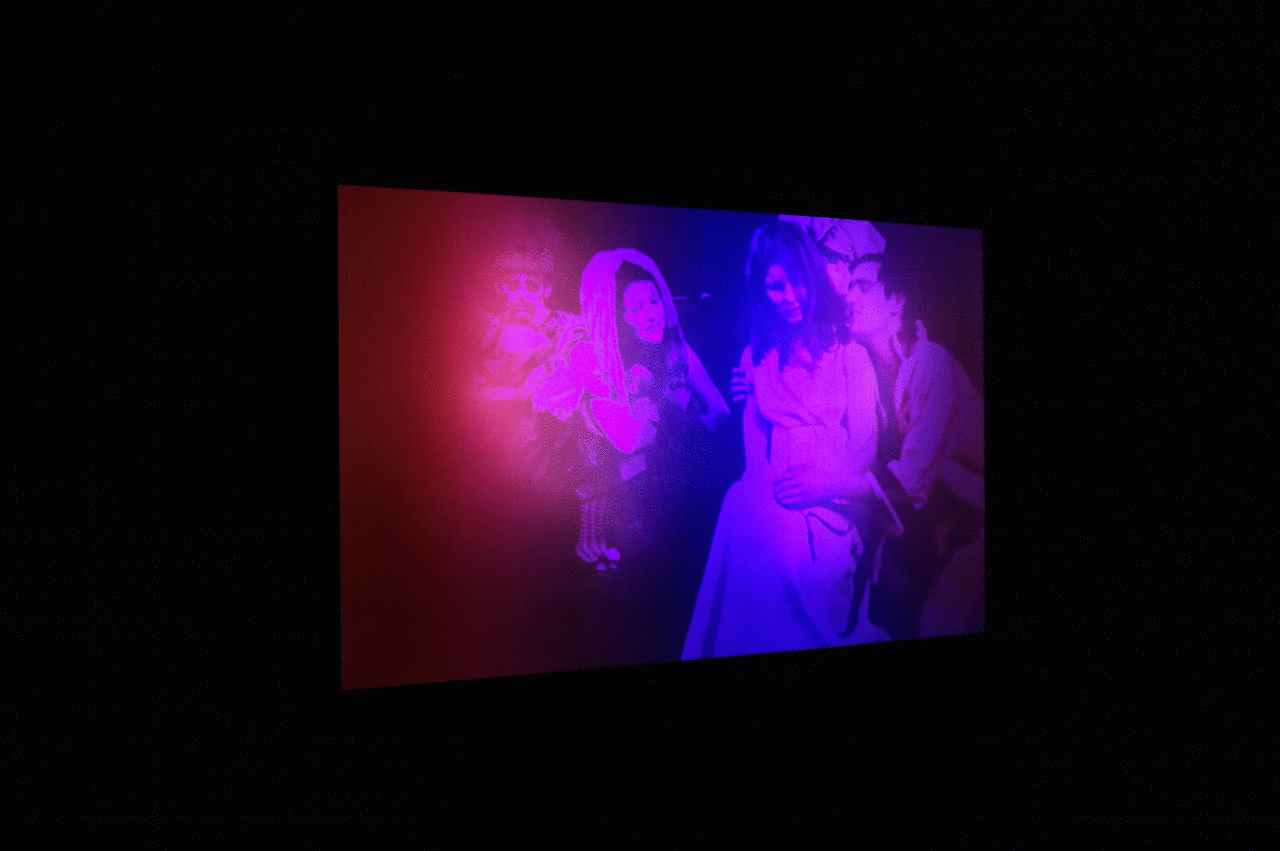
This
version of Kelley’s “Extracurricular Activity Projective Reconstruction
#36 (Vice Anglais)” (2011) is a lightbox that juxtaposes the original
found photograph with a still from his film.
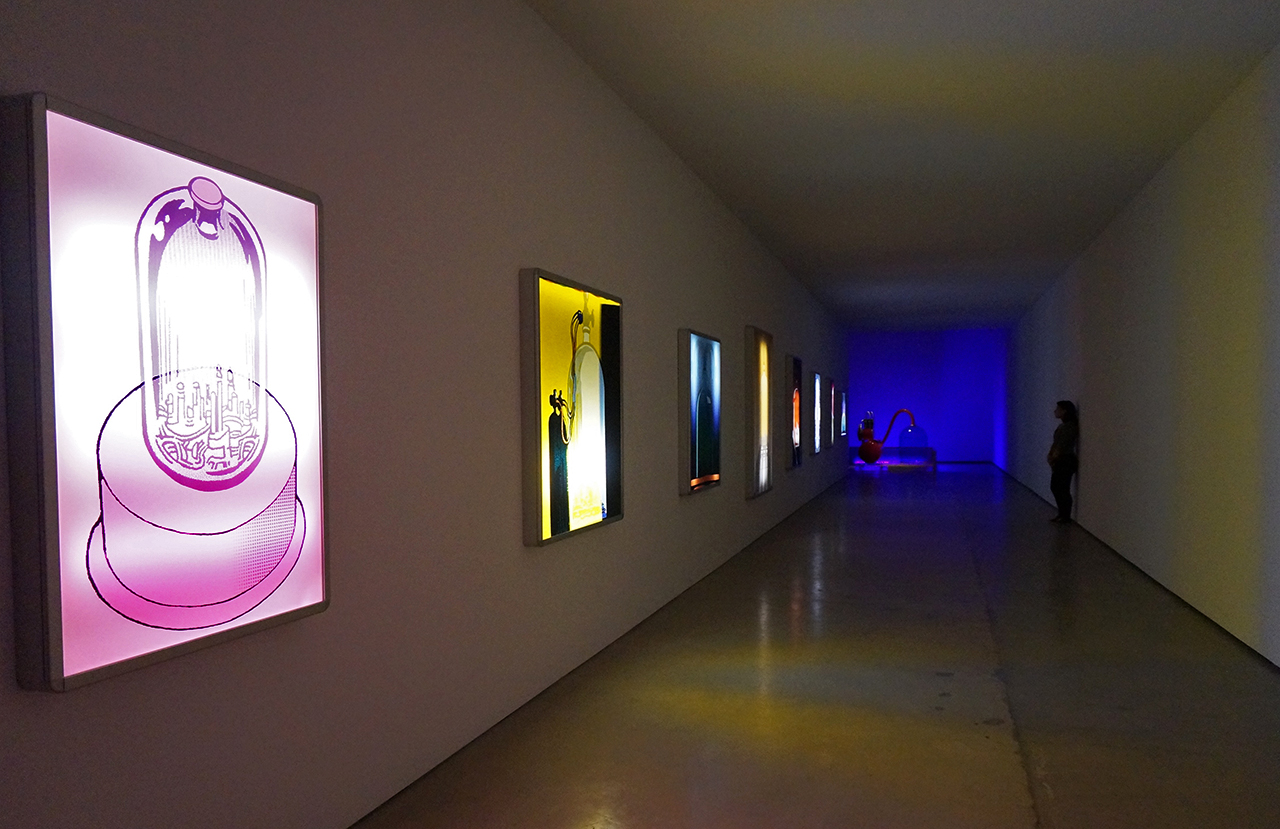
Wall of lenticular prints
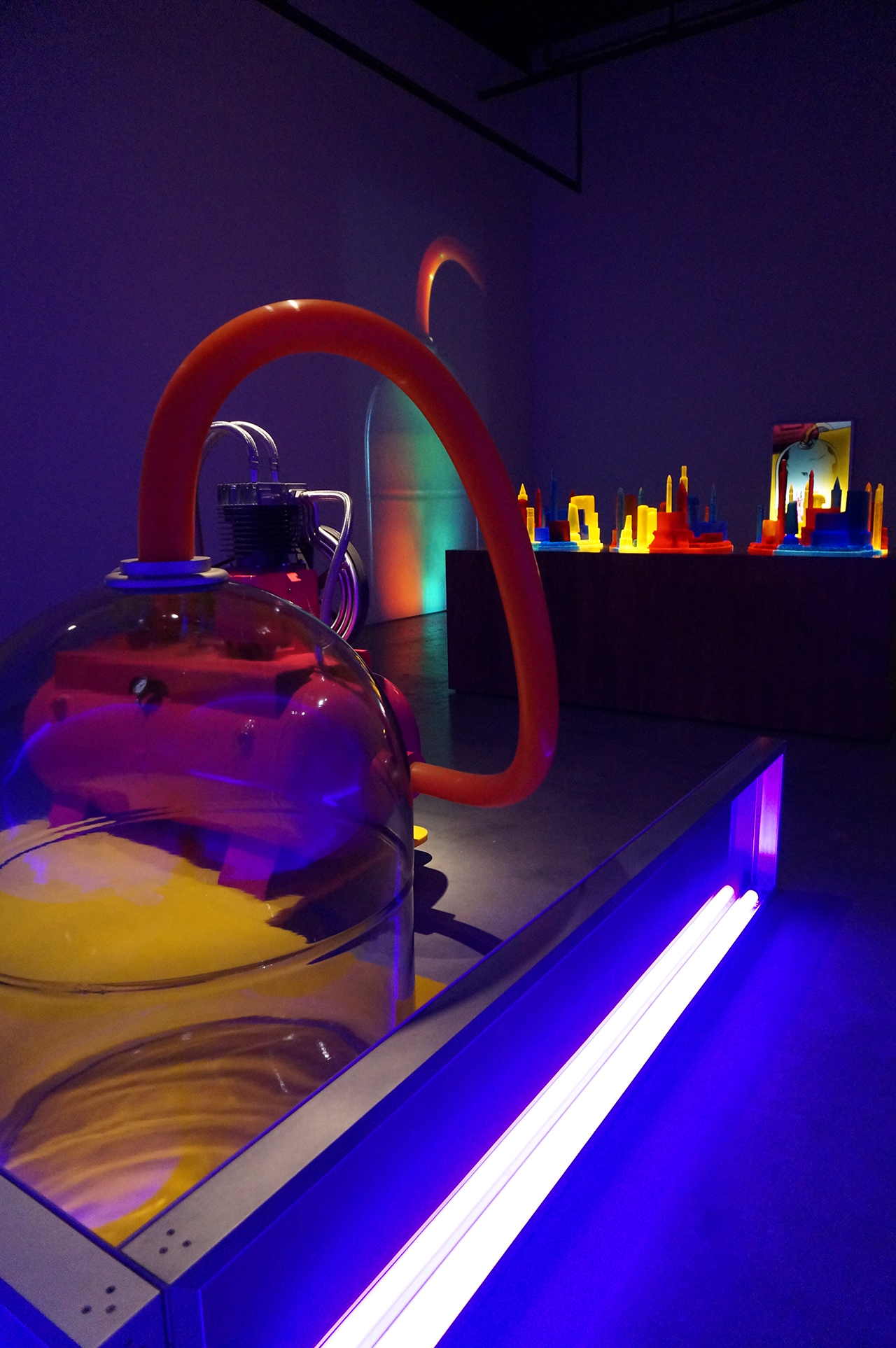
Mike Kelley, “Kandor 4” (2007)
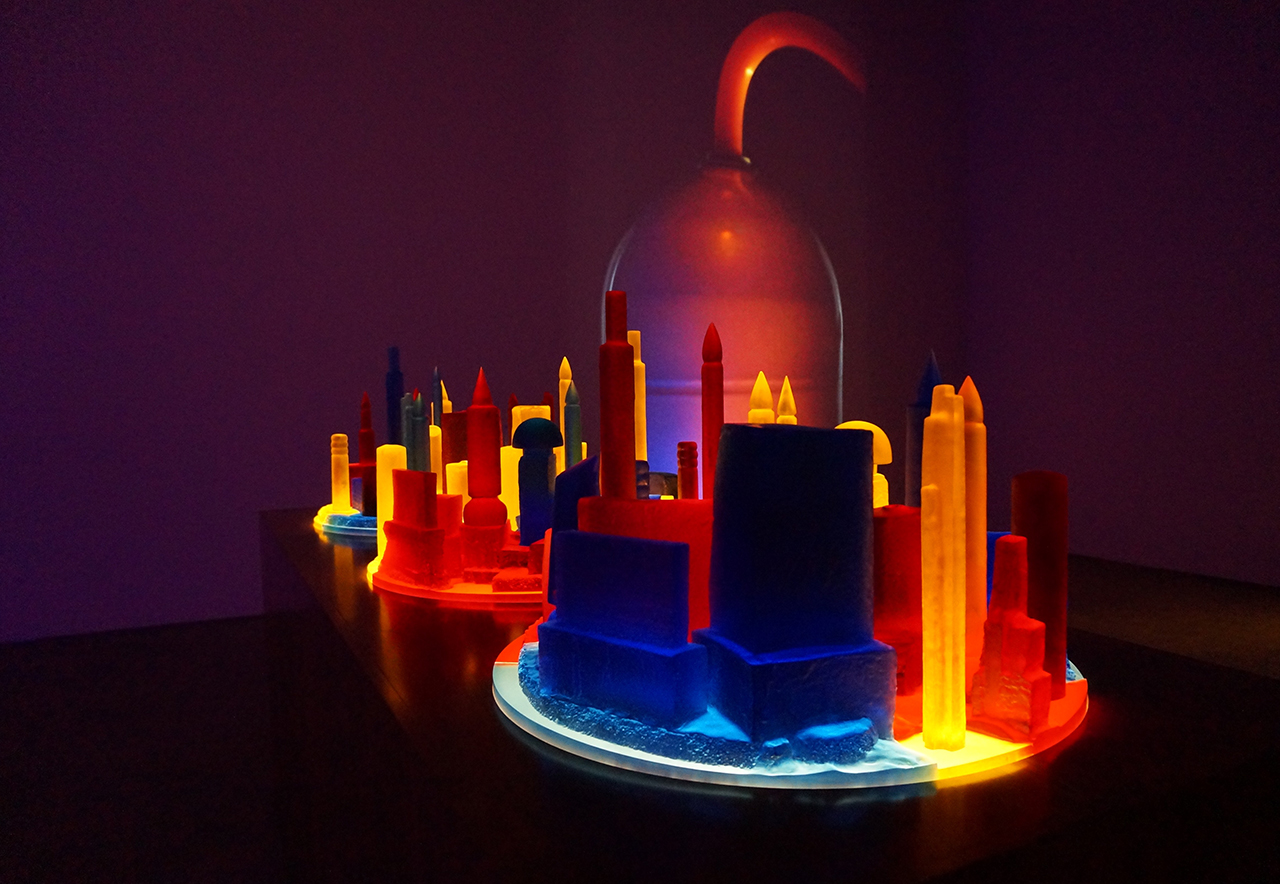
Mike Kelley, detail of “Kandor 4” (2007)
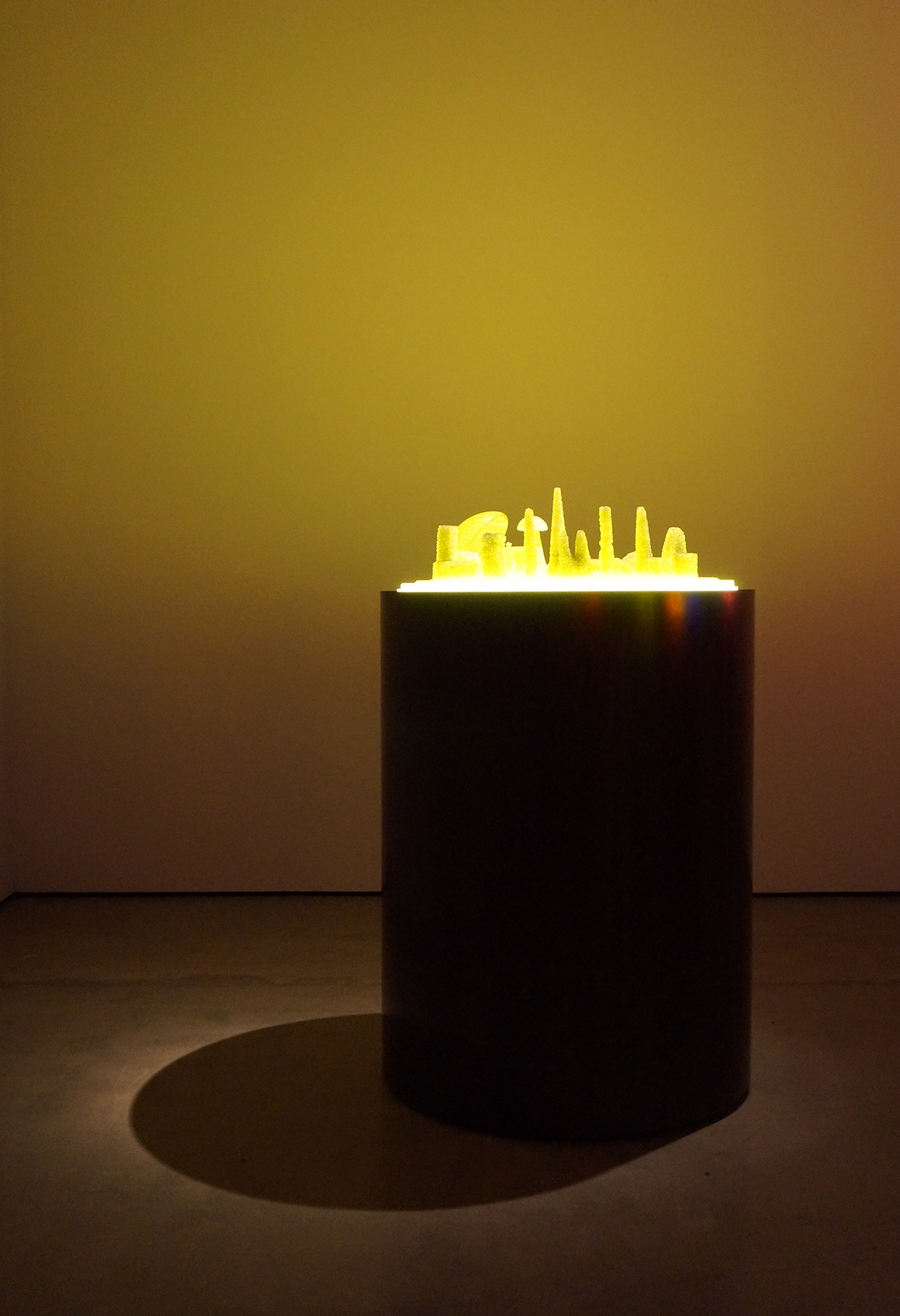
Mike Kelley, “City 20” (2011)
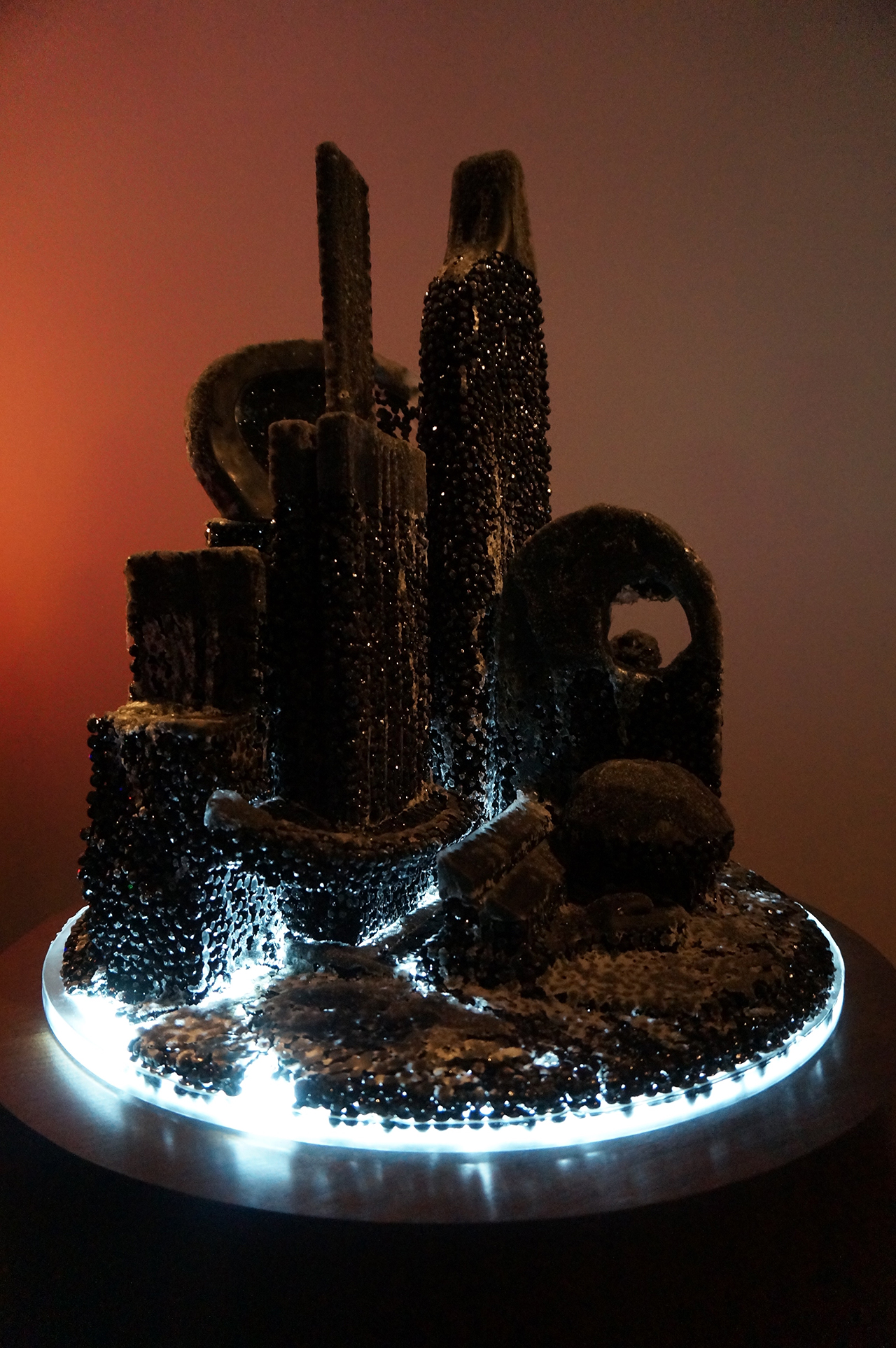
MIke Kelley, “City 15” (2011)
Mike Kelley continues at Hauser & Wirth (511 W 18th Street, Chelsea, Manhattan) through October 24.
hyperallergic.com



Δεν υπάρχουν σχόλια:
Δημοσίευση σχολίου